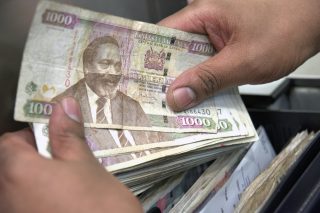Kenya is targeting diaspora remittances for the financing of public projects under the government’s Big Four Agenda – affordable housing, food security, manufacturing, and affordable healthcare. This comes after similar moves by Ethiopia, Nigeria, and Ghana, as African governments look to tap into the wealth of their diaspora community to fund national development.
In the East African region and across the continent, remittance inflows have been on a steady rise. They increased from $1.5 billion in 2015 to $2.8 billion in 2019 in Kenya, accounting for 2.9 percent of GDP according to World Bank data. Moreover, Central Bank governor Patrick Njoroge cited resilient diaspora remittances as one of the reasons for the decline in the current account deficit from five percent of the gross domestic product in 2018 to 4.6 percent in 2019.
But reports show that a huge chunk of remittances, up to 75 percent, is spent on family consumption such as food, education, and medical services while the remains are put in different investment vehicles including real estate, land, stocks, and savings.
“There is a lack of structured strategy for tapping remittances, that’s why people in the diaspora mainly invest in real estate,” said Shem Ochuodho, the convener of Kenya Diaspora Alliance, a body responsible for championing issues on behalf of Kenyans living abroad.
The Central Bank of Kenya is now encouraging citizens abroad to invest directly in projects contributing to economic growth at the micro-level, despite its projections that remittance inflows will stagnate in the coming years.
“With time we expect stabilization in remittances but an increase in Kenyans abroad investing in government securities,” said Njoroge recently. Currently, remittance investment in government securities is minimal.
The apex bank is extending the maturity period of treasury bonds to make it easier for Kenyans in the diaspora to invest in government securities. Compared to treasury bills that have a maturity period of 91 days, 182 days and 364 days, the range of government bonds is between five and 30 years.
More so, treasury bonds in Kenya are considered predictable and long-term sources of income with interest payments every six months. This is because they have a fixed rate, that is, the interest rate determined at auction remains for the entire life of the bond.
Another way through which the Kenyan government plans to grow remittances to directly finance development projects is by issuing a diaspora green bond in which citizens working and living abroad can invest. The funds could also be used for financing agribusiness and value addition as well as healthcare facilities such as cancer centres. But this can only be achieved if the government puts in place “pro-diaspora policies to attract their assets,” Ochuodho told The EastAfrican.
With the right policies, Kenyans abroad can mobilize the $3.5 billion required to finance the standard gauge railway phase 2B in a span of three years, the KDA official added, helping to overcome a stall in the project after China declined to fund it last year.
The use of diaspora bonds in Africa, including in fragile and conflict-affected states, is more recent and less proven. While outside of the region, many countries have launched bids but with varying levels of success with Israel and India widely considered the most successful to date.








